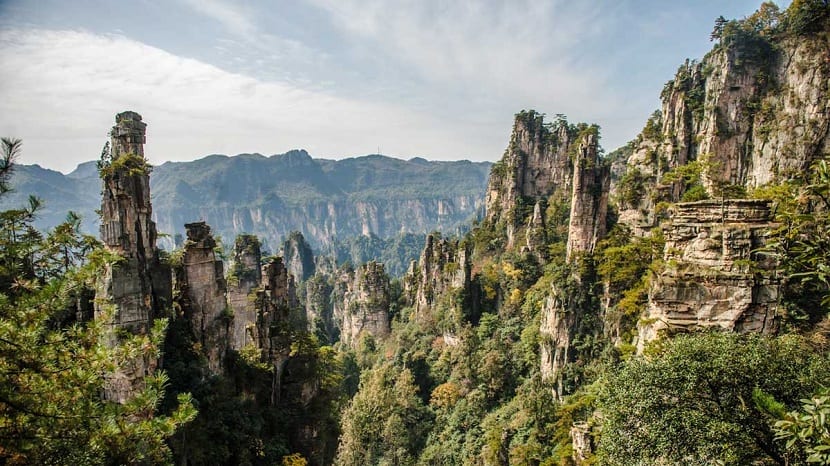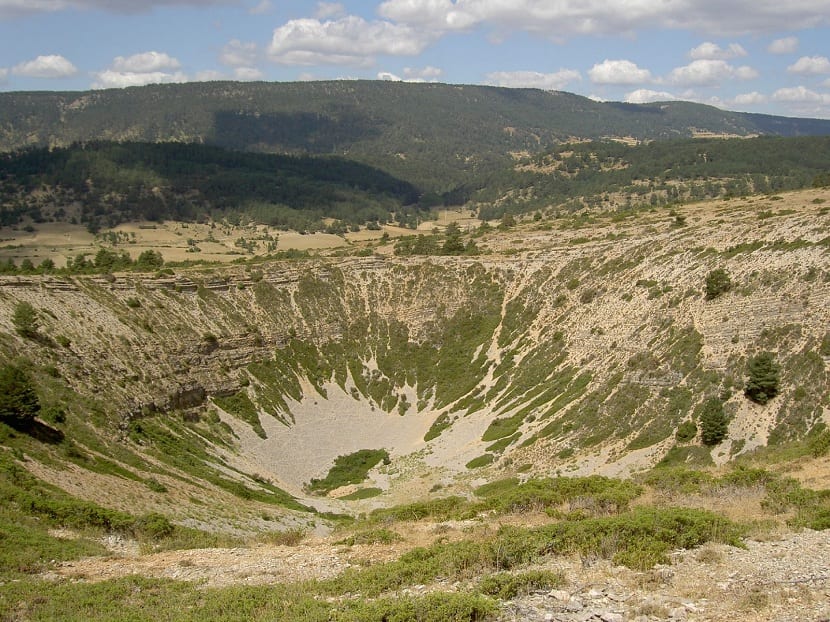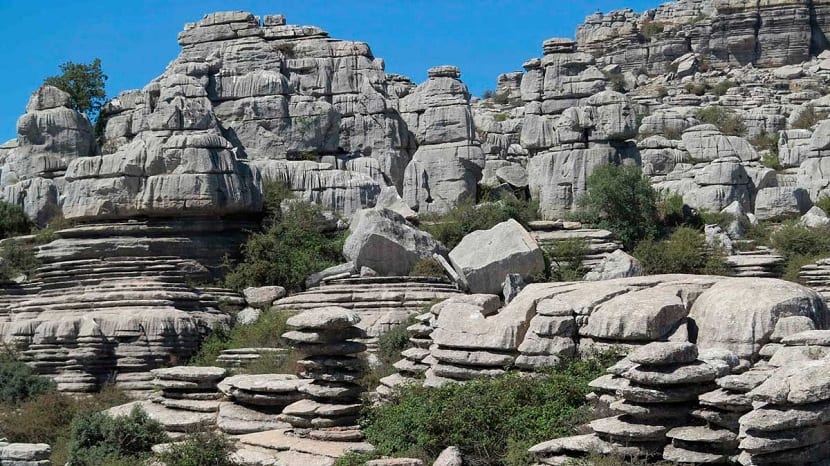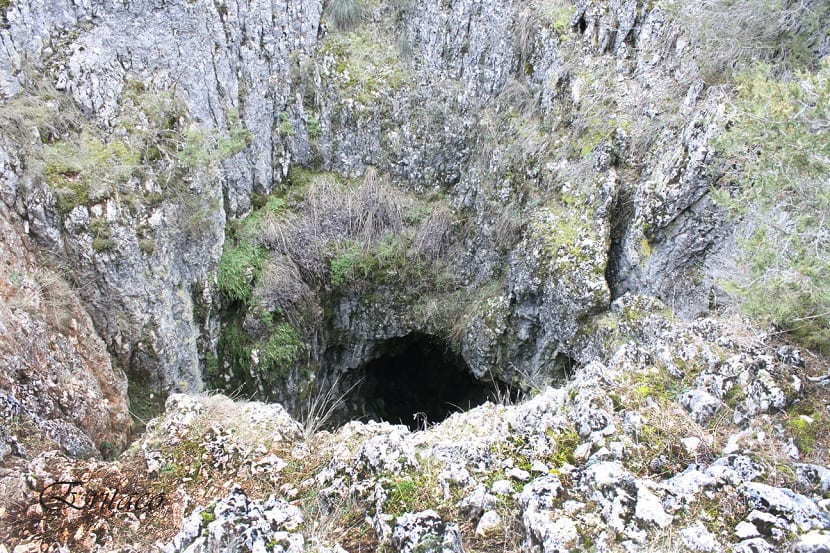
In geology there are different types of relief. Reliefs that have to do with its composition, its structure or its degree of inclination. In this case, we are going to talk about karst relief. It is a type of landscape that is composed of limestone rock. Limestone is a very special type of rock because despite being a sedimentary rock in its origin, water and living beings give it a coherence that makes it resistant to the different erosive agents that attack sedimentary rocks.
In this article we are going to explain all the characteristics and importance of the karst relief.
Key features

The limestone rock does not fragment but dissolves in water. Therefore, it is resistant to many erosion agents except rainwater. Over time, it wears out and a solution is formed, which is what forms the karst relief. This type of relief develops not only on limestone rocks but also uvsls
To learn more about the karst relief, we are going to delve a little into the rock that composes it. Limestone is composed of mostly calcium carbonate. This is what makes hair dissolvable in water, it is the only thing that rock is made of. It also has impurities and their accumulation is called terra rossa. Due to the dissolution of limestone rocks we can find two types of karst relief: the internal and the external.
Types of karst relief
External karst relief

The simplest form of dissolving limestone rock is lapiaz. These are superficial holes that can range from small millimeter-sized holes to a few meters wide. These shallow holes have a bottom that is surrounded by edges, although when they appear a very steep slope it takes on a more linear appearance, as if it were the pipes of an organ. If the lapiaz develops well it ends up forming a depression on the ground. This depression generates several types of karst relief:
- Dolomite. It is a closed depression with a circular or elliptical bottom. It can measure from a few tens of meters to hundreds. The bottom of this relief is covered or by the impurities that accumulate from the limestone rock. As water accumulates at the bottom, the dissolution rate of the rock is higher and, therefore, a sink appears that leads to a cave. This bottom is usually funnel-shaped due to the way in which the limestone rock dissolves little by little over time. If this formation will be close to the coast, it is possible that this bottom that is formed has been invaded by the sea. By way of saline intrusion, it can further deteriorate the rock.
- uvala. This type of formation occurs when several sinkholes grow together until they join in a single depression. It is so called because this coalescence has an alveolar shape.
- Polje. It is another type of formation that has to do with the karst relief. It occurs when an external depression that has a flat bottom and kilometer-long dimensions is closed by steep slopes. You could say that it is a very large grape. Within a poljé there are minor karst forms such as uvalas, lapiaces and sinkholes. Because these depressions are large, a hydrographic network usually develops on them. As it is a closed depression, the waters cannot flow properly but rather have a sink that gives access to an underground river. The area near this sink is usually a swampy area since they usually occur when there are heavy rains. Everything will depend on the size of the sink and the amount of rainfall.
Internal karst relief

It is another type of karst relief that forms caves. The origin of this type of relief occurs in the underground rivers that circulate inside the limestone rock. This water comes through the sinks that we mentioned above. The rivers take advantage of the weaknesses of the rock to make way through and inside them. If the rock wears away with the passage of water, it was giving shape to different underground paths, we can see authentic underground rivers.
As the river water dissolves the limestone in the interior, it leaves the old course to continue along the interior course. This is the reason why we can see completely dry caves that have been abandoned by rivers. The most elementary form that we find of a watercourse inside a cave is the so-called gallery. This essential galleries to stay can run and continue along other paths. The galleries can be complicated and narrower or wider depending on the course of the water. There are places where the water is forced to rise again and branches out into various courses. The area where the water tends to rise again is known as siphons.
The galleries that are abandoned by the water courses that begin another route usually maintain high levels of humidity in the walls circulating waters loaded with calcium carbonate. These drops of water are what, over the years, will form the stalactites and stalagmites. If a stalactite joins now stalagmite they will form a complete column. For this to form, thousands and thousands of years have to pass. Hence, the caves that have these formations are so important.
In the dynamics of these galleries it can happen that everything ends up collapsing and disappearing. This is how sickles and cannons are formed. These are very deep pits that are surrounded by vertical walls close together with a river in the background. The area where the river leaves the interior to the exterior is called upwelling.
I hope that with this information you can learn more about the karst relief.